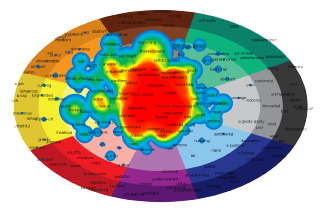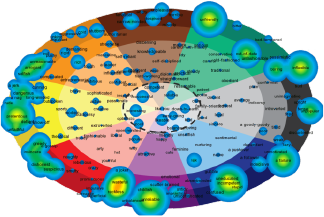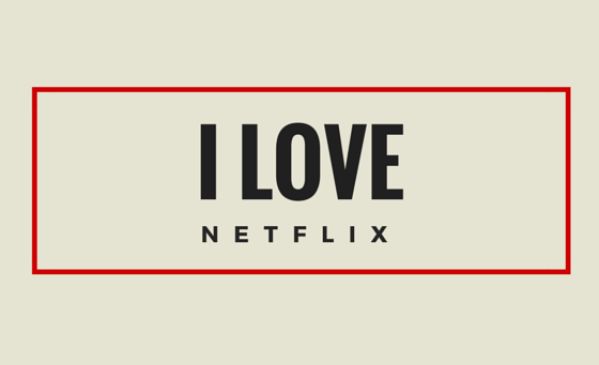Nobel Prize winning research in neuroscience and behavioral economics proves that all humans are irrational, emotional creatures. Both marketers and consumers believe they are in control of their decisions, but research is increasingly proving that assertion wrong. There is something deeper going on at a subconscious emotional level. Marketers that understand this and that harness the power of emotions are today’s true brand builders and are uncovering new opportunities for growth faster than their competitors.
Apple’s Emotional Right Space
Let’s take a look at Apple, one of the most valuable and impactful companies in the last century. Apple not only understands emotions, they use emotions as the beacon to guide their strategy and marketing. Apple has identified its emotional ‘Right Space’ – the core emotions it wants every customer to feel across every single touch point with which they engage.
The four emotions that Apple aims to elicit among customers are delight, surprise, connection, and love. Whether it is a new product like the iPad, the interface and UI of the AppStore, or the customer experience of the Genius Bar, Apple consistently targets those four emotions to drive long-term brand growth through emotional connection with those that are most important to its future. This short video demonstrates how Apple consistently expresses its core emotions.
How Coca-Cola Uses Emotions To Win
Another great example of the importance of emotional connection comes from the carbonated soft drinks category. For years, Coca-Cola’s competitors have performed better on taste tests, regardless it has been able to sustain a market leadership position. As marketers, the importance of differentiation, especially in mature and commoditized categories, has been embedded in the way we think and the way we market. Coca-Cola exemplifies how to differentiate far beyond the rational and functional attributes of a brand and into emotional territory.
Coca-Cola has been winning for years because it has identified its emotional ‘Right Space’. Its approach to brand building has been to have a laser focus on one emotion, happiness, and execute every communication, activation, and touch point with the intention of eliciting happiness among its consumers. Even, as ad campaigns evolve, as they have with Coca-Cola moving from ‘Open Happiness’ to ‘Taste the Feeling’, expression of the brand is still grounded in its core emotion, happiness. This is at the heart of how Coca-Cola creates a powerful emotional connection with its consumers.
Can You Really Taste A Difference Between Vodka Brands?
Psychology and behavioral science shows us that every human impulse to act is driven by emotions. The rational brain has an opportunity to veto that impulse, but if the emotions are strong enough, the rational brain can be overridden. Imagine the impact this has on brand choice, purchase decisions, and loyalty.
The Blake Project with the help of Hotspex, the world’s most advanced emotional measurement technology have spent more than a decade building tools to understand emotions and human motivation in order to accelerate brand growth. The findings are startling.
Research shows that on average 50% of purchase decisions are based on emotion. In the vodka category this number reaches up to 90%. This is why Grey Goose sells for a much higher price premium than Smirnoff, yet when it is removed from its emotionally provocative bottle, consumers pick Smirnoff over Grey Goose in 9 out of 10 taste tests. Irrational? Maybe. Emotional? Definitely.
Whether it’s packaging, advertising, or in-store presence, Grey Goose consistently executes within its emotional ‘Right Space.’ The brand infuses its key associations – premium, successful, rich, intelligent – into every consumer touch point. With so many marketers trying to find ways to get consumers to trade to more premium variants or brands in their portfolio, isn’t it time that we better understand what emotions are driving purchase behavior, loyalty, and advocacy in our categories?


Distressed Brand VS Healthy Brand
If You Could Make Your Customers Feel One Emotion, What Would It Be?
Try it. Stop for a moment and ask yourself – if you had the power and influence to make your customers feel just one emotion, what would it be? If you’re staring at the screen blankly, don’t feel too bad. We ask global marketers this question all the time and are amazed by the quizzical looks we get back.
The reality is, despite the marketing world embracing the importance of emotions and their impact on brands, we are still in the process of evolving how we make use of this knowledge in a way that accelerates brand growth through emotional connections. The good news is that there are 4 very simple steps to starting your journey of uncovering and executing your brand’s emotional ‘Right Space’ to create an emotional connection and drive unparalleled brand growth.
1. Understand Where You Are Today
As marketers and insights professionals, you are likely very used to measuring your brand equity, but are you measuring the emotions you are eliciting among your customers? How do you know if you are eliciting the right emotions that will optimize growth for your brand in its category against your competitors? As you build strategies and execute them, are you measuring what emotions you are infusing in your communications, activations, and touch points?
The first step in building an iconic and thriving brand is to understand where you are today by identifying your brand’s emotional ‘Now Space’. Our BrandInsistence model (first developed at Hallmark) powered by Hotspex technology measures the impact brands have on consumers across 5,000+ possible emotions. To accelerate brand growth, it is critical to identify where your brand is building a positive emotional connection in a way that is important to consumers in that category, so that you can execute consistently within that emotional territory.
Marketers and researchers have done a great job of measuring positive brand associations, but very few measure negative associations, and this is critical to igniting brand growth. Our research validated what evolutionary psychology has been saying for years – humans suffer from negativity bias. The impact to brands is that one negative emotion has three times the impact on purchase behavior that a positive one does. By measuring your emotional ‘Now Space’ you can identify any negative associations with your brand and start course correcting. Identifying and mitigating negative associations is essential to building a thriving brand.
So as a marketer and brand builder, do you know what your brand’s emotional ‘Now Space’ is? Do you know if you have any negative associations that could be indicators of concern for your brand?
2. Identify Where You Need To Go
Every brand has an emotional ‘Right Space’. This is the emotional real estate where purchase intent, loyalty and advocacy is maximized. These customer metrics typically translate into significantly better business performance across sales, profit, market share and the price premium that customers will accept.
800,000+ consumer interviews have fine-tuned our emotional measurement technology and over 100 brands across 34 categories have been measured. One of the most important insights that we uncovered is that there are specific emotions that are category independent, they are the table stakes for every single brand. These include emotions such as feeling happy, satisfied, interested, pleasure, trust, and connection.
In addition to these table stakes, it became clear that every category has emotional drivers that are specific to that category. Diving deeper, every brand within that category and competitive context has its own emotional ‘Right Space’.
An emotional ‘Right Space’ should be ownable, credible, and profitable. Ownable in the sense that your consumers associate those emotions with your brand more than your competitors. Credible in that it makes sense for your brand to direct consumer emotion that way. Profitable in the sense that by infusing your brand with these emotional triggers will lead to a sustainable long-term competitive advantage.
If you could make your consumers feel just one emotion, would you know which one to focus all your resources on? Do you know what your brand’s emotional ‘Right Space’ is?
3. Uncover How To Get There
Once you have identified your brand’s emotional ‘Right Space’, the key to building and growing your brand is executing every interaction with relentless consistency. We call it the ‘Unified Theory of Brand’, which in essence means your brand’s expression should be unified across every touchpoint from product, packaging, communication, to in-store activation.
The key to relentless consistency is to uncover which of your brand elements (i.e. colors, pack shape, logo lockup, brand script, brand characters, taglines, package shape, etc.) evoke emotions within your brand’s ‘Right Space’ and then ensure that these elements are executed across every touch point with relentless consistency.
Brand identity studies discover which of your brand elements are assets that amplify your brand emotional ‘Right Space’, and which elements are holding your brand back and should be modified or dropped entirely. Let’s face it, most consumers packaged goods packages smother you with all sorts of sublines, claims, and logos and would probably benefit from a ‘spring cleaning’ of sorts.
Every brand innovation journey should start with how you want to make your customers feel. Every creative and design brief should start by linking to your brand’s emotional “Right Space’. It is important to conduct early learning on initial advertising storyboards and package designs to ensure that you are evoking the emotions within your brand’s ‘Right Space’, in addition to creating persuasion and break through.
At the end of the day, consumers spend very little time thinking about your brand. They have jobs, families, and lives to live and don’t have time to expend mental energy on figuring out what brand to buy or how to find your brand on shelf. This is why it is so important to provide them with mental shortcuts through consistent expression of your brand’s emotional ‘Right Space’ across every single brand element and then ensure these brand elements are expressed in a unified manner across every single communication, activation, and touch point.
Do you know which of your brand’s elements are eliciting the right emotions with your consumers? Do you know what emotions your communications and activations are evoking? Are the emotions you activate consistent across all touch points?
4. Accelerate Brand Growth With Your Right Space
In many categories technical or functional parity is the norm. Cars, shampoo, beer, toothpaste, running shoes, cell phone providers…you get the point. The brands that are growing all use emotion to create irrational consumer desire. This is how brands win now and how they grow their equity over time.
Having traveled with us on a journey to build strong emotional connections, do you know what emotions you want your consumers to feel? Do you know whether this will ensure victory against your competition in your category?
Apple targets Surprise, Delight, Love and Connection. Everything flows from that. Of the 5,000+ possible human emotions, which ones make up your brand’s emotional ‘Right Space’?
Once you know that, you should invest in measuring how each of your marketing tactics perform against that emotional territory. Not only will this ensure a more effective use of your budget, it will drive stronger emotional connections with consumers, and build your brand in a way that accelerates its growth. This is true BrandInsistence – where there are no substitutes.
We have emotionally mapped thousands of brands around the world and stored their emotional performance in a database that you can access via The Blake Project. Simply email me, Derrick Daye for more about how we can help you build emotional connections for your brand.
Branding Strategy Insider is a service of The Blake Project: A strategic brand consultancy specializing in Brand Research, Brand Strategy, Brand Licensing and Brand Education




